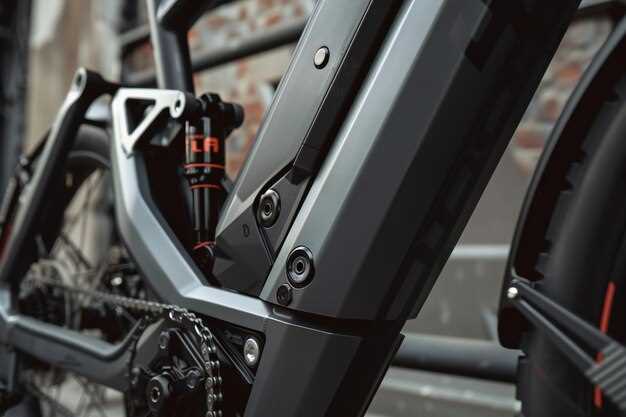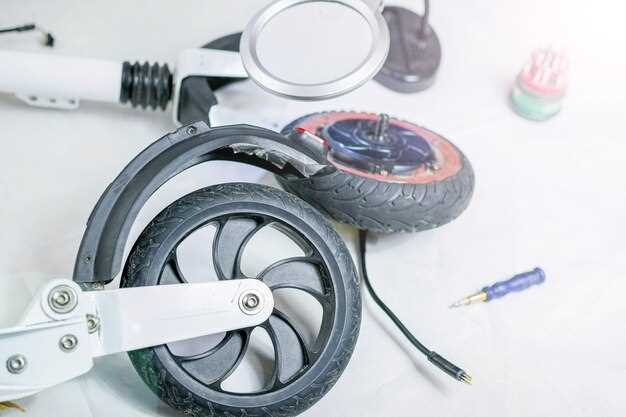
The rise of electric bikes has revolutionized personal transportation, offering riders a unique blend of convenience and power. However, as with any vehicle, there exists a need for performance tuning to maximize their potential. This exploration of tunning options for electric bikes aims to equip enthusiasts and casual riders alike with the knowledge needed to enhance their biking experience.
Electric bikes, commonly known as e-bikes, provide an electric assist that fundamentally alters the way we traverse urban landscapes and rural pathways. While many riders appreciate the default settings, there is a growing segment of the community eager to dive deeper into the intricacies of electric tuning. Tuning allows riders to adjust attributes such as speed, torque, and battery efficiency, elevating the standard e-bike experience to a more personalized and powerful ride.
In this article, we will delve into various performance tuning options available for electric bikes, ranging from firmware adjustments to hardware enhancements. By understanding these tuning mechanisms, you can optimize your e-bike performance while ensuring a safe and enjoyable cycling experience. Join us as we navigate through the options that enable riders to unlock the full capabilities of their electric bicycles.
Optimizing Battery Management Systems for Enhanced Range

Battery Management Systems (BMS) play a crucial role in the performance of electric bikes (e-Bikes) by ensuring optimal operation of the battery pack. Effective tuning of BMS can significantly enhance the range of an electric vehicle (EV), allowing riders to travel longer distances without the need for frequent recharging.
One of the primary functions of a BMS is to monitor the state of charge (SoC) and state of health (SoH) of the battery. By utilizing advanced algorithms, BMS can optimize energy consumption based on real-time data, adapting the power output according to riding conditions and battery status. This dynamic tuning ensures that the battery operates within safe limits while maximizing efficiency, ultimately extending the bike’s range.
Another critical aspect of battery optimization involves temperature management. Temperature fluctuations can adversely affect battery performance and longevity. A well-designed BMS includes thermal management features that regulate battery temperature, ensuring that the cells operate within their optimal range. By preventing overheating or excessive cooling, the BMS safeguards the battery’s capacity, thus enhancing overall range.
Cell balancing is also essential for maximizing battery performance. Uneven charging and discharging of cells can lead to reduced capacity and faster degradation. Advanced BMS technology includes active balancing techniques that ensure even distribution of energy across cells. By maintaining uniformity, the life cycle of the battery is prolonged and its range is improved.
Integrating smart features into the BMS can provide riders with greater control and insights into their e-Bike’s performance. Features such as adjustable power modes allow users to tune their riding experience according to personal needs, whether prioritizing range or power. Such tuning capabilities empower users to make informed decisions that optimize battery usage during rides.
Software updates are also vital for maintaining and enhancing BMS functionality. Regular updates can introduce improvements in algorithms used for energy management and cell balancing, reflecting advancements in technology. Keeping the BMS up-to-date is a simple yet effective way to ensure that the e-Bike continues to achieve the best possible range and performance.
In summary, optimizing Battery Management Systems through advanced monitoring, temperature control, cell balancing, customizable settings, and regular software updates culminates in significant improvements in an electric bike’s operational range. Proper tuning of these systems is vital for riders seeking to maximize their e-Bike’s potential.
Adjusting Motor Settings for Improved Acceleration and Speed

For electric bike enthusiasts looking to enhance their riding experience, tuning the motor settings can lead to significant improvements in both acceleration and speed. These adjustments not only optimize performance but also tailor the bike’s behavior to suit individual preferences and riding conditions.
1. Understanding the Controller Settings
The electric bike’s controller is the brain behind the motor’s operation. By accessing the controller settings, riders can adjust parameters such as maximum current output and throttle response. Increasing the maximum current can lead to faster acceleration, as more power is directed to the motor when the throttle is engaged.
2. Customizing the PAS Levels
Many electric bikes come with a Pedal Assist System (PAS) that helps riders manage the amount of assistance the motor provides. By tuning the PAS settings, cyclists can choose how aggressively the motor engages when pedaling. Higher PAS levels may result in quicker acceleration, making it easier to tackle inclines and increase overall speed.
3. Fine-Tuning the Wheel Size and Gear Ratios
Adjusting the wheel size and gear ratios can also impact acceleration and speed. Smaller wheels typically offer quicker acceleration due to a lower gear ratio, while larger wheels can achieve higher top speeds. Riders should consider their riding style and the terrain when selecting the optimal combination.
4. Utilizing a Performance Battery
The choice of battery can affect not only the range but also the performance of the electric bike. A high-capacity lithium-ion battery with a higher discharge rate can provide more power to the motor, resulting in better acceleration and sustained speed. Ensuring a robust battery connection is essential for maximizing performance during tuning.
5. Regular Maintenance and Firmware Updates
To maintain optimized motor settings, regular maintenance of the electric bike is crucial. Additionally, manufacturers often release firmware updates that can improve motor efficiency and response times. Keeping the software up-to-date ensures that the bike performs at its best.
By systematically adjusting these motor settings and components, electric bike riders can achieve a remarkable enhancement in acceleration and speed, ultimately making their rides more enjoyable and efficient.
Upgrading Software Platforms for Custom Riding Profiles
Modern electric bikes (e-bikes) are equipped with advanced software platforms that allow riders to customize their riding profiles to suit different terrains and personal preferences. Upgrading these software platforms can significantly enhance the performance and overall riding experience.
Custom riding profiles enable users to adjust various parameters such as speed, torque, and battery usage. By upgrading the software, users can access features that refine these settings, allowing for optimized power management and improved efficiency. Here are key benefits of upgrading software platforms:
- Enhanced Performance: New software often includes refined algorithms that optimize motor performance, providing better acceleration and smoother transitions between power levels.
- Battery Management: Upgrades can improve battery efficiency, extending the range and lifespan of the electric bike. Users can also set specific riding modes that adjust power consumption based on terrain.
- Customization: Riders can create personalized profiles that cater to specific situations–such as climbing steep hills or enjoying a leisurely ride. This situation-dependent approach maximizes the bike’s performance while ensuring a pleasurable experience.
- Improved Safety Features: Software upgrades may introduce advanced safety features, including enhanced braking systems and stability controls, ensuring a safer ride.
- Connectivity and Integration: Many electric bike platforms now offer connectivity features that integrate with smart devices. Upgraded software can improve these connections, allowing users to monitor their performance metrics in real-time.
When considering an upgrade, it’s essential to choose a reliable software provider and ensure compatibility with the existing electric bike hardware. Regular updates can also keep the software optimized, addressing any bugs or issues that may arise.
In summary, upgrading software platforms on electric bikes can lead to significant improvements in performance, efficiency, and personalization. Riders who take advantage of these upgrades can truly enhance their e-bike experience, adapting it to meet their unique riding needs and preferences.

